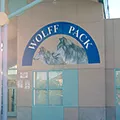
Clark County School District
Henderson, NV
Elise L. Wolff Elementary School is located in Henderson, Nevada, and is part of the Clark County School District. It is home to more than 900 students.
Nine grade levels of reading ability separate students entering the fifth-grade class at Elise L. Wolff Elementary in Henderson, Nevada. As daunting as that may sound for an educator, teacher Lloyd Goldberg says he expects all of his students to approach sixth-grade—or higher—proficiency levels by year end. And they’ll have a lot of fun getting there.
Goldberg says that Renaissance solutions provide the enabling data and learning resources, while Wolff teachers supply the “flair” that engages students in the fun of reading. “Renaissance solutions have allowed us to move from a program-based teaching method rooted in basal readers to an individualized-instruction model that emphasizes increased student metacognition and progress at every reading level. We’re able to more effectively remediate problems for struggling readers and simultaneously motivate advanced students. Our teachers have fully embraced the Renaissance tools, using the information as the basis for measuring, encouraging, and celebrating success through a myriad of inventive challenges and contests that make reading achievement exciting.”
The challenge
The challenge: Motivate every student
Located in an affluent community, Elise L. Wolff Elementary in Nevada’s Clark County School District boasts an average student attendance rate of 96 percent, nearly zero disciplinary and truancy problems, low transiency, 98 percent parent-teacher conference attendance, and an active Parent Teacher Association (PTA).
Just a few years ago, more than 86 percent of Wolff students scored passing grades on the Nevada Department of Education Criterion Referenced Tests for reading. But Goldberg says teachers identified a troubling trend. “We expected an upward slope, but test scores were in fact declining, dropping from 86 to 84 percent over three years. The Nevada Growth Model also indicated that few of our students at the meets-standards level progressed to the exceeds-standards level, and a number of exceeds-standards students were flatlining or on track to drop back. We realized that although we’d been successful in our concentrated efforts to help ‘bubble’ students—those falling just below the meets-standards levels—we had missed opportunities to motivate the higher achievers.”
Six of Goldberg’s 33 fifth-graders participate in the Gifted and Talented Education program, and five in other fifth-grade classes rank as highly gifted. At the other end of the spectrum, five fifth-graders rank below the 10th percentile in reading scores, and about 3 percent of the school’s overall population classify as English language learners. Together these students represent dozens of potentially underserved readers in traditional program-based settings.
Goldberg says that to better reach these students, the school sought to more effectively match instruction to skill levels and interests. Educators needed a reading program that would allow more accurate progress monitoring and encourage accountability, and could serve as a reflective device for teachers to readily identify issues and modify lessons to meet the needs of different reading levels and types of learners.
The results
School-wide enthusiasm and progress
Renaissance solutions met those requirements, and today all Wolff K–5 teachers use Renaissance Star Reading® assessment data for placement and progress monitoring and the Renaissance Accelerated Reader® tool for holistic instruction of reading fluency and comprehension. Every teacher conducts a minimum of three annual Star Reading assessments, and many use the tool for monthly progress monitoring or more frequent screenings for Response to Intervention and other reading groups.
“Every Thursday I progress-monitor struggling readers,” comments Goldberg. “We do both a words-per-minute evaluation and a Star assessment. Sharing that data as well as reading-quiz results—all students keep their own binders of Accelerated Reader TOPS reports—helps students see quantitative progress and take responsibility for their own learning. Good results in hand, they’re frequently the initiators of the move to the next book level.”
Graphic Mondays
Goldberg also shares with his students class-wide data from Accelerated Reader diagnostic reports. At the beginning of each week, math lessons start with Accelerated Reader data. Students graph results on poster boards displayed around the classroom and participate in discussions of outcomes and causes. Goldberg explains, “We apply performance-based tasks, use constructed response, and learn about the math standards of graphing and data. Students interpret the data and use it to support their conclusions. It’s a very inclusive process—everyone, no matter their current reading level, can contribute points, percent correct, and number of quizzes passed to our classroom goals. The exercise really helps students work as a team and build community—they love Mondays!”
We apply performance-based tasks, use constructed response, and learn about the math standards of graphing and data. Students interpret the data and use it to support their conclusions.
Lloyd Goldberg, Teacher – Elise L. Wolff Elementary School
Shaved heads, bugs for lunch, and other crazy fun
Renaissance data fuels competitive excitement throughout the school and serves as the foundation of the Wolff Reading Rangers program. Renaissance helped develop custom reports for tracking progress through levels of success defined using the Star Zone of Proximal Development that suggests readability-level ranges to optimize growth and minimize frustration for students. Graduating to new Ranger levels requires students to read increasingly higher point valued books and passing as many as 35 Accelerated Reader quizzes with a minimum score of 85 to 90 percent. “The program has invigorated reading,” Goldberg confirms. “So far this year, our students have completed more than double the number of quizzes they took during the same period last year, and average scores have jumped from 84.3 to 90.5 percent.”
Friday school-wide assemblies celebrate Reading Rangers progress, and a monthly carnival recognizes graduates. Other Ranger festivities applaud success with water-balloon battles, pie throwing, and a chance for students to turn the principal into a human ice cream sundae, scrumptiously decorated with chocolate syrup, cookie crumbles, and sprinkles!
Teachers and students alike concoct an array of challenges to read more, understand more, achieve more. In one classroom, with every quiz passed students can select fish and other underwater stickers to fill a gigantic aquarium image on the wall. Jungle animals populate another display. But perhaps no one has more skin in the game—literally—than Goldberg. To date he’s had to eat bugs for lunch and shave his head, and this year’s challenge will have him sporting a new half-sleeve bookshelf tattoo if Wolff students pass 90,000 Accelerated Reader quizzes with a 90 percent or higher average.
The program has invigorated reading. So far this year, our students have completed more than double the number of quizzes they took during the same period last year, and average scores have jumped from 84.3 to 90.5 percent.
Lloyd Goldberg, Teacher – Elise L. Wolff Elementary School
Pushing high achievers and catching up struggling readers
By all accounts, the Renaissance-based reading program works brilliantly at Wolff. Goldberg’s class achieved a 25-week average of 90 percent or more students with an 85 percent or higher percent-correct average on practice quizzes. Across the school, teachers are reversing the trend of declining reading scores, using Renaissance solutions to ensure every student advances.
“As interventionists, we need to be clear how long, and at what level, a child remains in intervention,” Johnson said. “In order to know these things, we must progress monitor on a regular, scheduled basis. Not many products online offer schools a chance to do this as easily as Star.”
Renaissance tools routinely help teachers adjust lessons and target resources. Star reports also provide actionable data for parents and relieve them of time-consuming reading-log management. “Traditional tools like basal readers, worksheets, and readings logs take more time and produce less data,” Goldberg says. “Relying on those methods would require two to three times the work to glean about one-third the data. Renaissance also lets us automatically differentiate learning—a student reading Green Eggs and Ham can sit next to one reading The Hunger Games, and we all can discuss story themes and produce evidence-based text. We’re successfully pushing high achievers to new levels and catching up struggling readers at faster rates than ever expected.”
Goldberg’s 10 years of experience with Renaissance tools—he’s used them at three schools, implemented the program from scratch at one, and trains teachers on Accelerated Reader—suggests universal applicability and value. “I’ve applied Renaissance technology at schools in affluent communities like Henderson where the PTA originally funded the program (now part of the district’s general budget), as well as at schools that rely heavily on Title 1 funding. In each case, we’ve seen tangible proof of improving skills and enthusiasm for reading. Elementary students at any level in any school want to read, do their best, and be successful. Renaissance solutions help teachers, parents, and students work together to accomplish that.”

